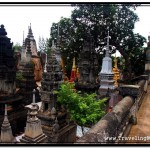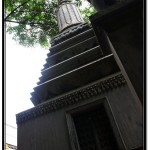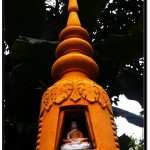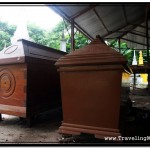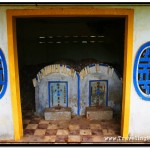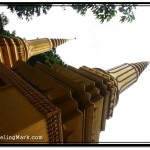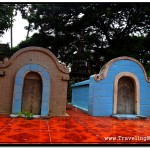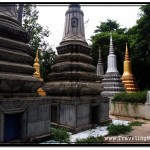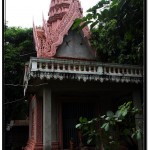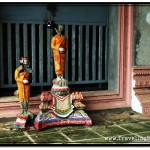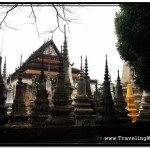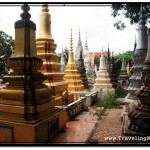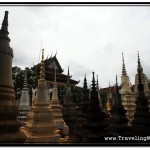Tag: Stupas
Buddhism Stupas
My first exposure to Stupas was at Wat Preah Prom Rath in Cambodian Siem Reap. At that time I had no idea what these monumental structures within Buddhist pagodas were and why they ranged so much in size, color and shape. It was apparent that Stupas are an important part of Buddhism, I just didn’t know what purpose they served. When I got to Wat Bo in Siem Reap, the Stupas were more mesmerizing than the temple itself. That’s also one of the main reasons why I focused on Stupas and managed to miss historically and culturally important Reamker paintings. So what exactly are those Buddhist Stupas and why you always see them at Temple grounds?
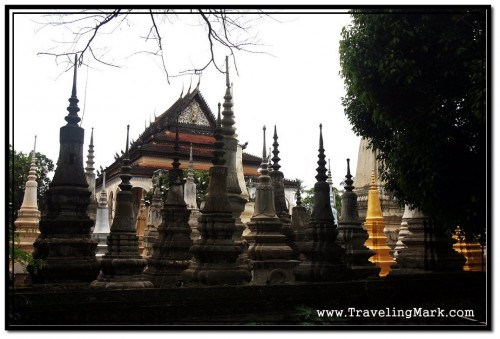
I saught answers with one of my students from the English language class at Wat Preah Prom Rath. I came to the pagoda about an hour prior to the lecture and one of the girls from the class was sitting there on the bench. Since I was entirely new to Buddhism, I asked around and she was most happy to explain. The only trick was that the class in which I was teaching was free for all, so students of all levels of English participated. The girl who was my Buddhism guide that day was a very beginner so language barrier was making it a bit difficult to understand each other.
From what I could make out, Stupas are used as graves. These monumental structures located near pagodas are basically tomb stones that house ashes of deceased Buddhists. The reason why some Stupas are bigger than other is wealth of a person or family whose ashes are housed inside. The wealthier a person, the fancier, bigger and more decorated a Stupa they can afford.
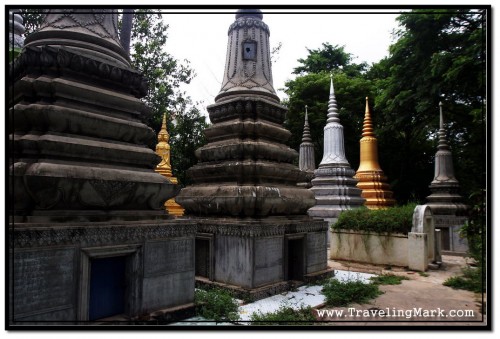
Stupas oftentimes have small entrance doorways through which ashes of other members of the same family are put inside. Through this door those who are still alive also put offerings for the dead, which include food for their journey through the afterworld, flowers, money and whatever other relics may be needed. Buddhists believe in reincarnation – death is not the end, only a transition.
In Buddhism, aside from practical use as funerary monuments, Stupas are best described as sacred monuments that symbolize enlightenment. Stupas have square bases which symbolize four immesurables as taught by Buddhism. The immeasurables are:
- Immeasurable love
- Immeasurable compassion
- Immeasurable joy
- Immeasurable equanimity
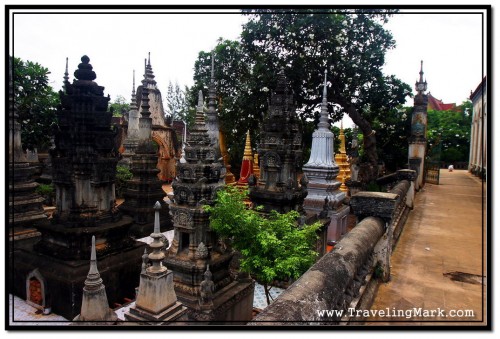
There is deep meaning to each part of Stupas. They are full of relics and holy objects, decorated with reliefs of important Buddhist events. There is powerful spirituality to each Stupa which is instantly recognized by merely looking upon one. I was drawn to those upon each encounter in Cambodia, Vietnam and Thailand. Very powerful, mesmerising monuments that establish peace and harmony and keep negative forces at bay.
RELATED GALLERY:
Wat Bo Stupas in Siem Reap, Cambodia Photo Gallery
Wat Bo Temple in Siem Reap, Cambodia
I was in Siem Reap, Cambodia for the same very reason every other tourist makes it there – Angkor Wat temples. However I was in no rush to get to Angkor but most of all, I did not limit my stay to merely exploring Angkor Archaeological area and moving on. I really wanted to savour the atmosphere of Siem Reap and wanted to explore its hidden gems that may not attract many tourists, but are spectacular in their own way. Wat Bo temple was just like that.
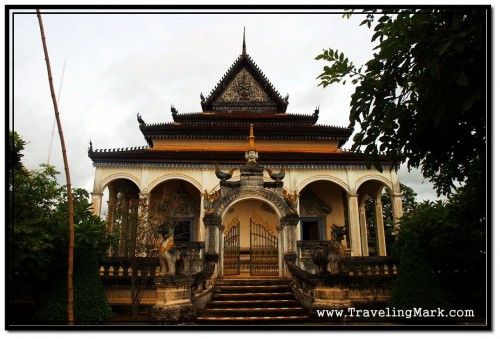
I used reference map in Siem Reap Angkor Visitors Guide to find locations of numerous temples located within Siem Reap town itself. Exploring Angkor Wat temples was to be a big adventure for which I wanted to get ready thoroughly (high cost for the entrance ticket was one of the main reasons) so to get accustomed to local climate, customs and everything else, I used the initial days in Siem Reap to explore its own gems. According to the maps, Wat Bo was the closest temple to Two Dragons Guesthouse where I was staying so I made it my first destination on my “exploring the temples of Siem Reap” day.
Wat Bo is located on the east side of the Siem Reap River. Entire area around Wat Bo temple and along Wat Bo Road in Siem Reap is now known as “backpacker’s area” due to vast numbers of budget guesthouses and restaurants.
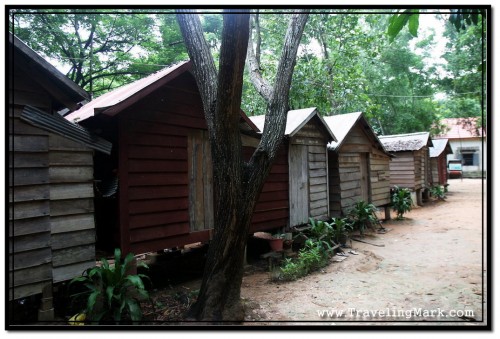
Other than Angkor temples, Wat Bo is one of the oldest pagodas in Siem Reap province. It was founded in the 18th century and to day it enjoys high regard among native Khmer population. The most significant part of Wat Bo are 19th century paintings depicting scenes from a Cambodian epic poem Reamker. As a traveller who never uses guides, whether it’s books or professional guide services, I have managed to miss out on Wat Bo’s Reamker entirely. I don’t even know where exactly these depictions are, I just know they are there. Darn, sometimes doing the research prior to going there pays off.
To my credit, other than Wat Preah Prom Rath pagoda, which is a modern, centrally located pagoda, Wat Bo was my first pagoda on my “exploring Siem Reap pagodas” tour. Wat Preah Prom Rath doesn’t count as I stumbled across it by chance, whether as visit to Wat Bo was planned and deliberate. Being my first, I was too overwhelmed with the vastness of the temple grounds and most of all – mesmerized by the number and variety of Stupas. At the time of my visit to Wat Bo, I had no idea what Stupas were, but as my day went on and I have visited other temples in Siem Reap, I learned all about it. More on Stupas in next post!
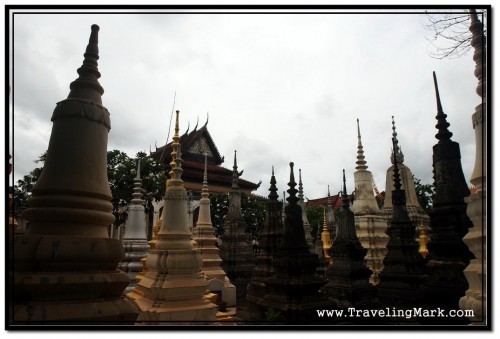
RELATED GALLERIES:
